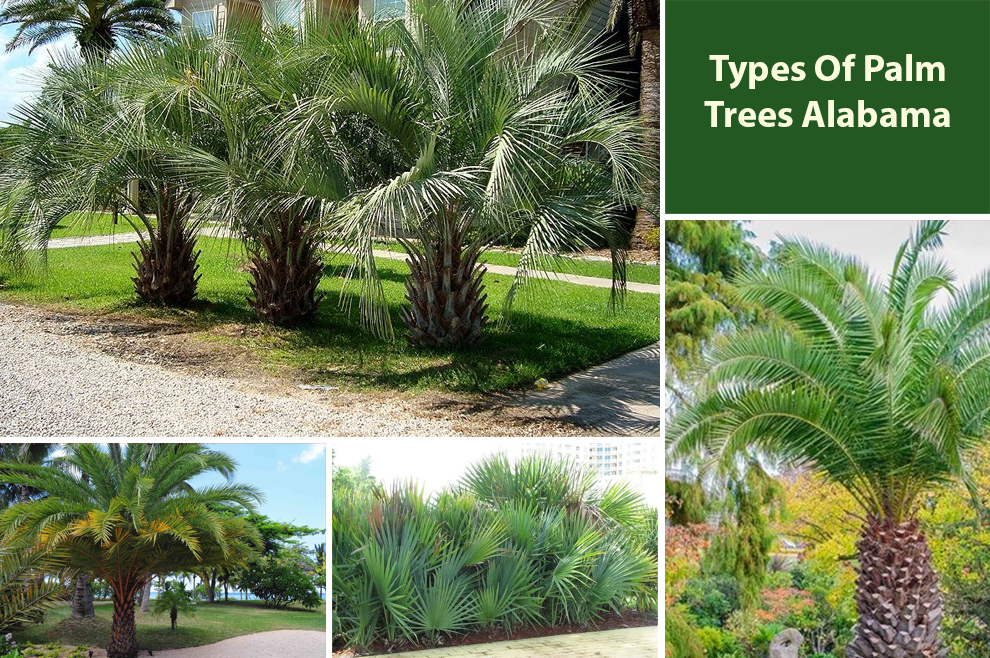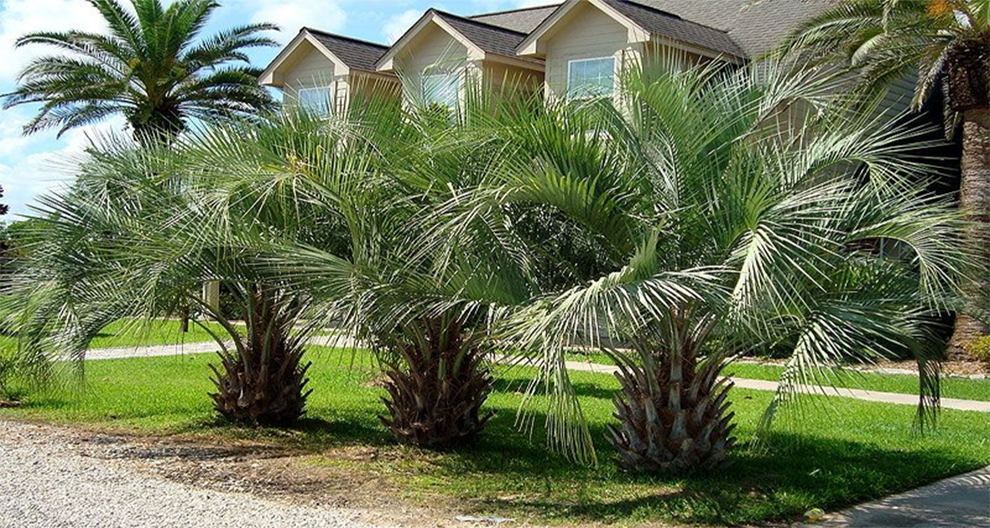Different Types of Palm Trees That Grow In Alabama
Alabama is home to Sabal Palm, Needle Palm, Pindo Palm, Windmill Palm etc. These palm trees thrive in full sun and well-draining soil. Read about other palms found in Alabama in detail below!

Despite its relatively temperate climate, Alabama boasts a surprising variety of palm tree species that thrive in its diverse landscapes.
From the stately Sabal Palmetto to the exotic Windmill Palm, these majestic trees add a touch of elegance and allure to the state’s gardens, parks, and coastal areas.
Join us as we talk about the different Alabama palm trees, discovering their unique characteristics, appearances, and adaptability to this charming corner of the Southern United States.
Whether you’re a gardening enthusiast or simply curious about the rich biodiversity of Alabama, get ready to be inspired by the beauty and versatility of these stunning palm trees that call the Heart of Dixie their home.
Types of Palm Trees Alabama Has Growing Well
- Sabal Palm (Sabal palmetto)
- Windmill Palm (Trachycarpus fortunei)
- Pindo Palm (Butia capitata)
- Needle Palm (Rhapidophyllum hystrix):
- European Fan Palm (Chamaerops humilis)
- Canary Island Date Palm (Phoenix canariensis)
In Alabama, several common palm tree species thrive, particularly in the southern coastal regions with their subtropical climate.
Let’s explore the features and growing conditions of some of the commonly grown palm trees in Alabama:
1. Sabal Palm (Sabal palmetto)
Features: Also known as the Cabbage Palm, the Sabal palm has a sturdy, rough-textured trunk with a characteristic bulge at the base. Its fan-shaped fronds can reach lengths of 6-10 feet, creating an elegant, tropical appearance.
Growing Conditions: Sabal palms are highly adaptable and can grow in a variety of soil types, including sandy, loamy, and clayey soils.
They prefer full sun exposure but can tolerate partial shade. These palms are also salt-tolerant, making them suitable for coastal areas.
2. Windmill Palm (Trachycarpus fortunei)
Features: The Windmill Palm is a cold-hardy species, making it well-suited for the northern regions of Alabama.
It features a slender, hairy trunk and a canopy of fan-shaped, dark green fronds. Its fronds are arranged in a circular pattern, resembling a windmill.
Growing Conditions: Windmill palms prefer well-draining soil and can tolerate a wide range of soil types.
They require full to partial sun exposure and are more tolerant of cold temperatures compared to many other palm species.
3. Pindo Palm (Butia capitata)
Features: The Pindo Palm, also known as the Jelly Palm, has a stout trunk and arching, bluish-green fronds. It produces clusters of tasty orange-yellow fruits that are edible and often used to make jelly.
Growing Conditions: Pindo palms prefer well-draining soil and thrive in full sun to partial shade. They are relatively cold-hardy and can withstand occasional freezes, making them suitable for various regions in Alabama.
4. Needle Palm (Rhapidophyllum hystrix):
Features: The Needle Palm is a low-growing palm with fan-like fronds that have needle-like segments, giving it a unique appearance. It is a slow-growing species.
Growing Conditions: These Alabama palm trees prefer moist, well-draining soil and can tolerate both full sun and partial shade.
They are relatively cold-hardy and can withstand colder temperatures, making them suitable for northern regions of Alabama.
5. European Fan Palm (Chamaerops humilis)
Features: The European Fan Palm is a smaller palm with multiple trunks and fan-shaped, blue-green fronds. It has a compact and bushy appearance, making it ideal for smaller gardens.
Growing Conditions: European Fan Palms prefer well-draining soil and can tolerate partial shade. They are relatively cold-hardy and can withstand mild freezes, making them suitable for various regions in Alabama.
6. Canary Island Date Palm (Phoenix canariensis)
Features:
The Canary Island Date Palm can grow up to 50-60 feet tall with a spread of 20-40 feet, boasting a towering trunk adorned with diamond-shaped leaf scars that lend it a unique textured appearance.
Its large, pinnate fronds arch gracefully, forming a symmetrical crown, each frond adorned with up to 200 leaflets, creating a lush and tropical display.
These Alabama palm trees produce small, date-like fruits. They are typically ornamental and not suitable for consumption.
Growing Conditions:
It thrives in full sun, requiring at least 6 to 8 hours of direct sunlight daily. While it can tolerate occasional cold spells, protection may be necessary during severe freezes.
The palm prefers well-draining soil but can adapt to various soil types, including sandy, loamy, and clayey soils. Regular watering, especially during the establishment phase, is essential for its growth.
Choosing cold-hardy species like the Windmill Palm or European Fan Palm in northern regions and more tropical species like the Sabal Palm or Pindo Palm in the southern coastal areas will ensure successful growth and thriving landscapes.
You might also like to know about Palm Trees in – Arizona | Hawaii | Miami | Texas | San Diego | South Carolina | California | Florida
What Parts Of Alabama Have Palm Trees?
Palm trees that grow in Alabama grace the southern regions of Alabama, particularly along the Gulf Coast and coastal areas.
Cities like Mobile, Gulf Shores, and Orange Beach boast these tropical beauties, adding to the allure of their sandy beaches.
Fairhope and some parts of Baldwin County also showcase palm-lined streets and parks, creating an inviting ambiance.
While the southern areas enjoy a subtropical climate conducive to palm growth, the prevalence of these iconic trees diminishes as you move further north into the state, where colder temperatures limit their presence.
Related: Palm Tree Growth Rate | Palm Tree Lifespan | Different Types of Palm Trees
What Are The Things To Keep In Mind Before Planting Palm Trees In Alabama?

Before planting palm trees in Alabama, several essential considerations can ensure their successful growth and health.
Firstly, among the different types of palm trees in Alabama, choose palm tree species that are cold-hardy to withstand occasional freezing temperatures, especially in the northern regions.
Ensure the planting location receives full sunlight, as most palm trees thrive in bright, sunny conditions.
Additionally, opt for well-draining soil and provide adequate watering during the establishment phase to help the roots take hold.
Consider wind protection and allow sufficient space for the palm’s mature height and spread. Regular fertilization and vigilant monitoring for pests and diseases are also crucial for maintaining healthy palms.
By keeping these factors in mind, you can create a thriving and beautiful palm landscape that complements Alabama’s charming surroundings.
